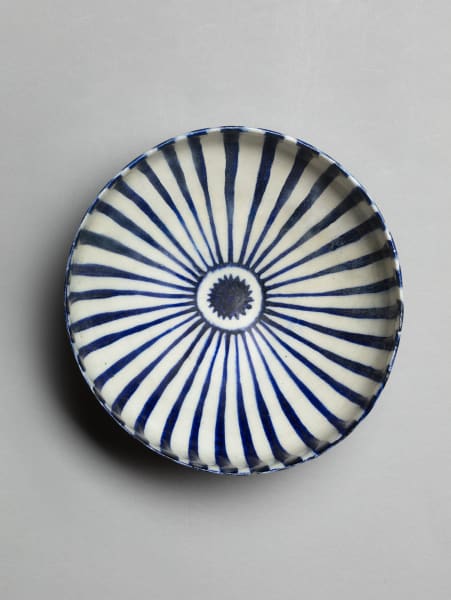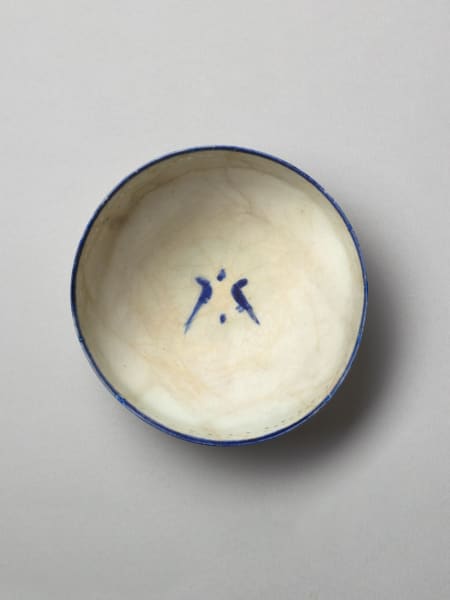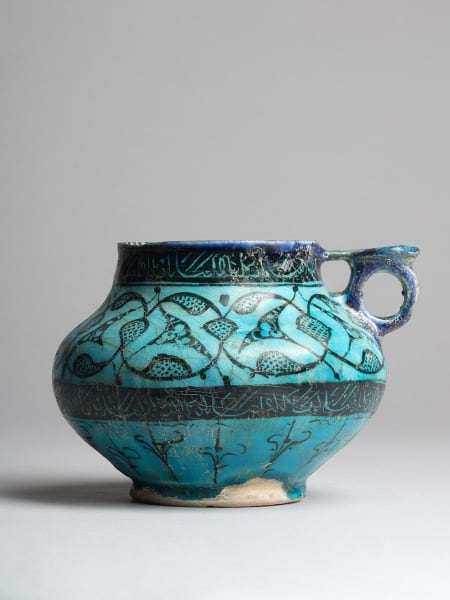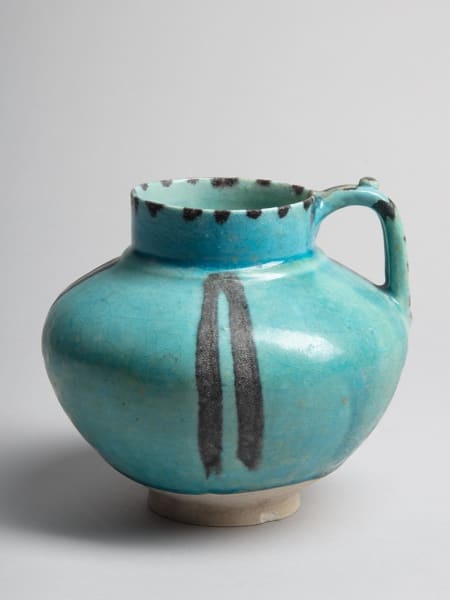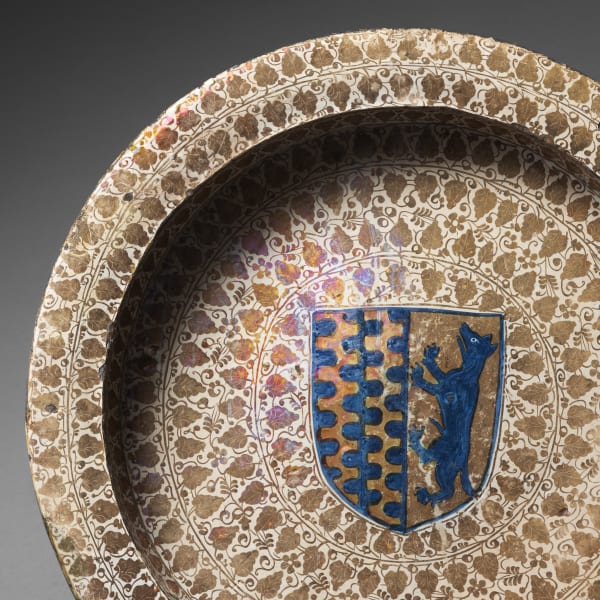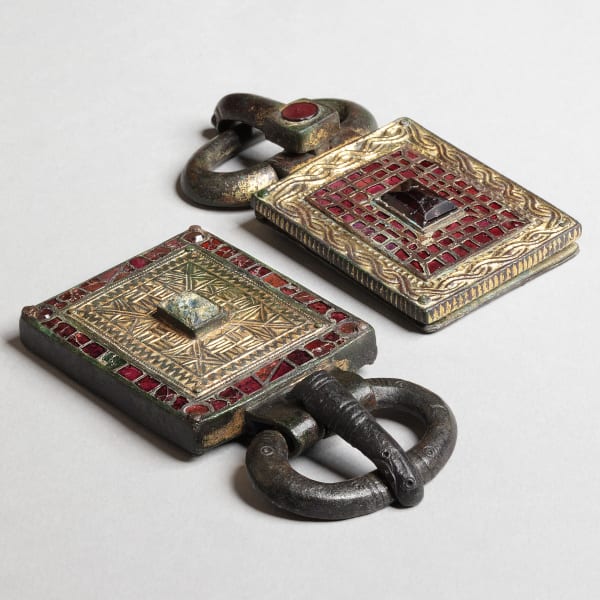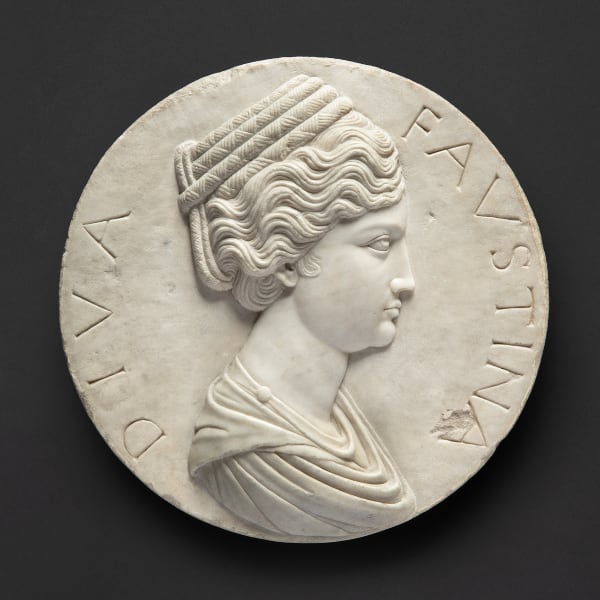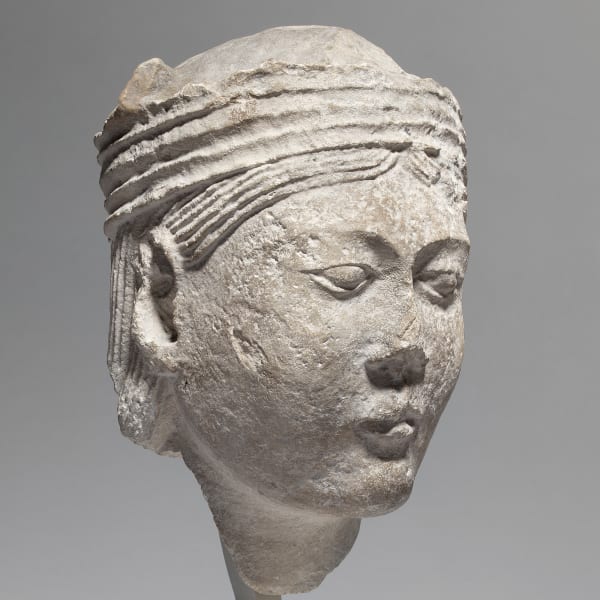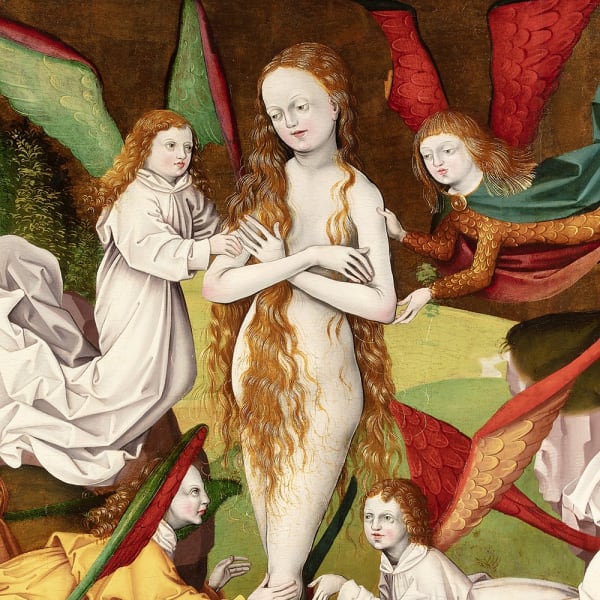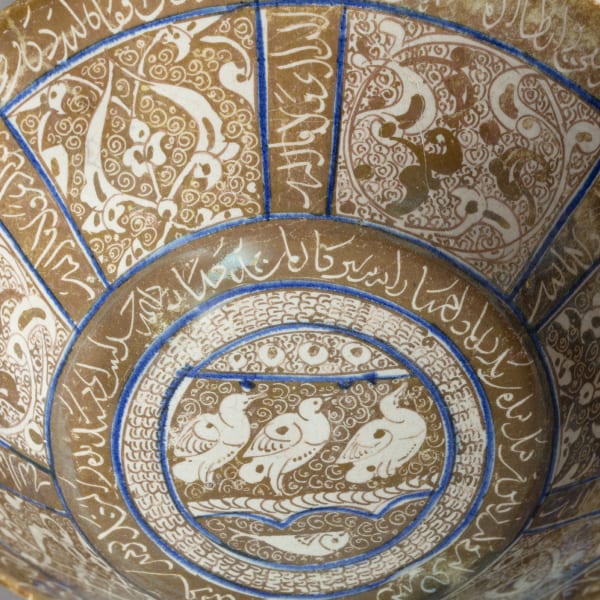
'Cobalt and Turquoise' is a focus exhibition exploring the use of blue pigments and glazes in the production of fine stone-paste ceramics in the Kashan workshops during the period between c. 1150-1350. The twelve objects presented here reflect the diverse production of medieval Persian ceramics workshops and their vibrant experimentation with blue glaze and underglaze-painting combinations.
The exhibition opens with a fine 'silhouette-ware' jug (right) painted with a thick black engobe slip under a bright, transparent turquoise glaze. This early and powerful example of an underglaze-painted ware marks an important transitional moment in the history of Iranian ceramic production, from the use of slip-painting to the new underglaze-painting technique. The majority of the exhibition focusses on a group of underglaze-painted pots and jugs made in and around Kashan c.1180-1220. A small and remarkably intact water jug decorated with pigment-laden strokes of cobalt blue and incised decoration (below) illustrates the Kashan workshops' attempts to emulate the translucent and decorative effects of Song Dynasty porcelain using a Persian jug form. Other pieces, like an enameled over-glaze painted mina’i plate, reflect the technical and aesthetic achievements unique to the Kashan potters.
Together, the objects presented here reflect the aesthetic refinement and technical virtuosity of potters working in medieval Iran, most probably in the workshop centre of Kashan, which dominated production in the region. The extraordinary experimental nature of the period and its potters is reflected in the richness of forms and techniques displayed here.
Please explore the digital exhibition below, or follow the link to download the full catalogue.

Early Arabic sources attest to the fact that colour and material held great meaning in medieval Islamic aesthetics. The colours used to decorate objects held aesthetic, formal, and iconographic significance. The colour 'blue' is a powerful signifier that in one instance makes simple reference to the use of a jug for pouring water; while in another it refers to the watery spheres of the heavens and the earth.

Silhouette-ware jug with scrolling palmettes
c. 1150-1200
‘Silhouette-ware’ ceramics were amongst the earliest underglaze-painted wares to be produced at Kashan and other ceramic centres in twelfth century Iran.
These wares represent both a rupture and continuity with earlier Iranian ceramics production, because they combine the use of clay-based slips used in ancient Iranian pottery decoration with the new underglaze painted style of the tweflth century.


A mina'i dish with floral arabesque over turquoise glaze
c. 1175-1200


Jug with dashes of cobalt pigment and incised decoration
Iran, probably Kashan
c. 1200-1220


Bowl with underglaze-painted radial decoration
Iran, probably Kashan
c. 1200-1220
The fine, curving body of the bowl is enhanced by the rich blue strokes of pigment that trace over its form. The ability to form thin, high walls like this is a technical accomplishment made possible through the use of a durable stone-paste ceramic body. Raised on a short, unglazed foot, this simple vessel has a timeless elegance that emphasizes the union of geometry with form.


A bowl with radial decoration and poetic inscriptions
c. 1200-1220
The inscriptions on this bowl, in both Arabic and Persian, contain poetic verses as well as benedictory formulae:
‘A pearl shines at the time when there is a red rose, and a garden shines where there is a red rose, and the nightingale sings in the tongue of the red rose, wine shines in red vessels.’


A bowl with ‘water-weed’ design and perforated frieze under turquoise glaze
c. 1200-1220


A ‘Sultanabad’ bowl with flying phoenixes
Iran, probably Kashan
c. 1260 – 1320





